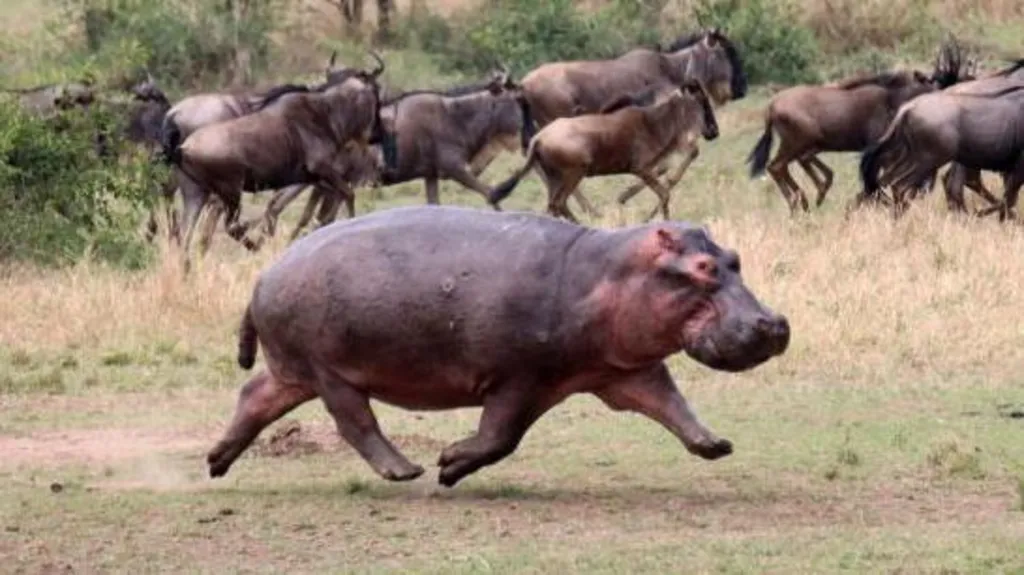Research from the Royal Veterinary College (RVC) has revealed that hippos can trot so swiftly that all four of their feet can leave the ground for up to 0.3 seconds. This discovery was made while observing two hippos at Flamingo Land in North Yorkshire, captured on video as they moved within their paddock.
Kieran Holliday, from the zoo and theme park near Pickering, highlighted that this study has provided new insights into hippo locomotion. Hippos, known for their large size weighing up to two tonnes, were previously thought to move similarly to elephants, using a standard four-footed (quadrupedal) walk with a specific footfall sequence.
Prof. John Hutchinson and former RVC undergraduate student Emily Pringle conducted the research, analyzing video footage of the hippos’ movements to uncover these findings.
‘Really impressive’
When comparing their observations to online footage of hippos in motion, researchers from the Royal Veterinary College (RVC) discovered that hippos can exhibit a nearly trotting gait, even when walking slowly or running fast. Professor John Hutchinson, the lead author of the study, expressed amazement at how hippos become airborne during their rapid movements.
“It’s really impressive to see how hippos get airborne when they move quickly,” Prof. Hutchinson remarked. He noted the challenges of studying hippos due to their aquatic tendencies and dangerous nature, which limited previous scientific understanding of their locomotion.
“We’re excited to present the first comprehensive study on how hippos walk and run,” he added. “We were pleasantly surprised by their ability to get airborne during rapid movement.”
Kieran Holliday, the science and conservation officer at Flamingo Land, emphasized that gaining deeper insights into the species they care for will enhance future husbandry practices. He highlighted the potential positive impacts of the research on zoo management and enclosure design across the broader zoo community.
